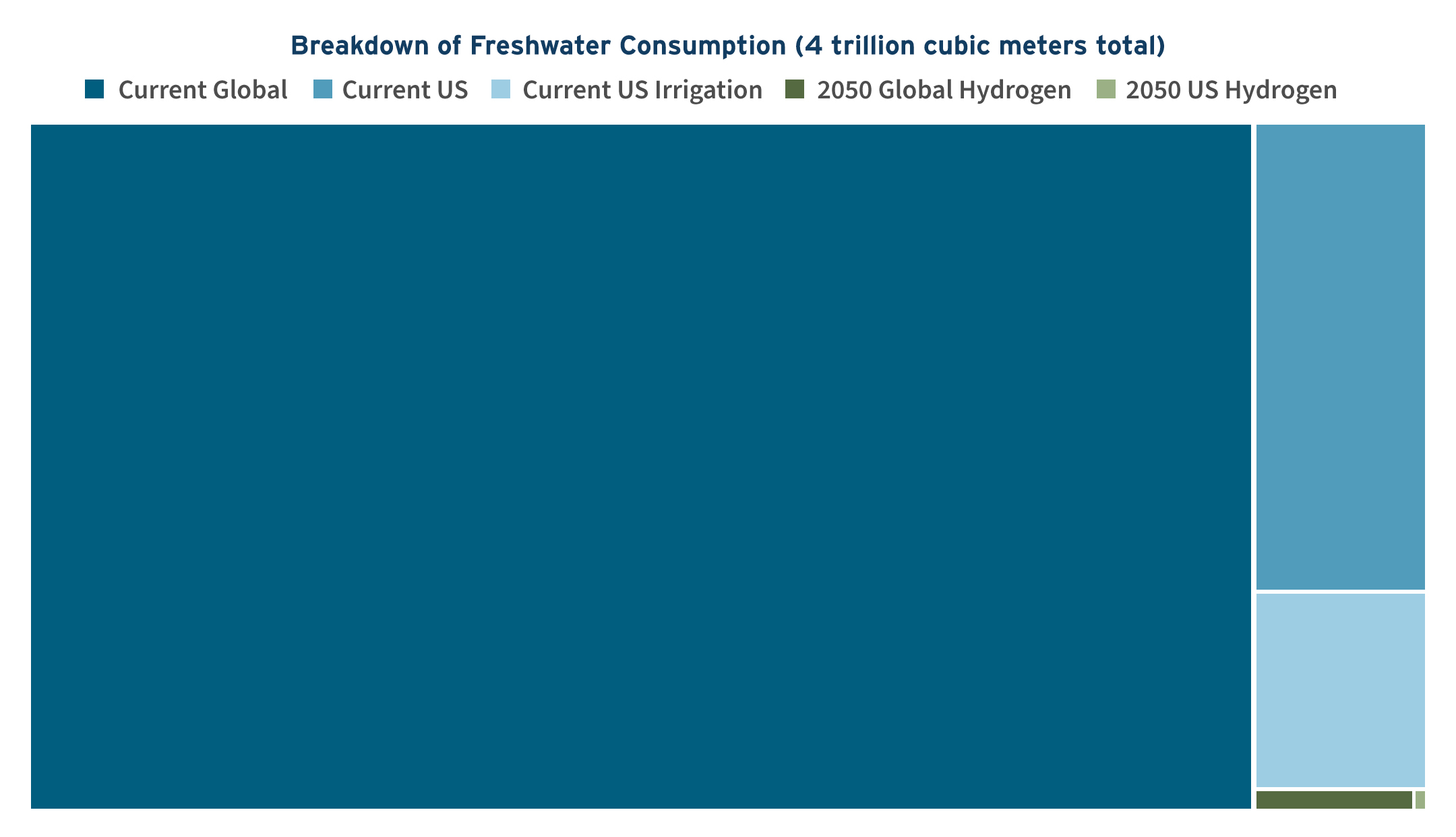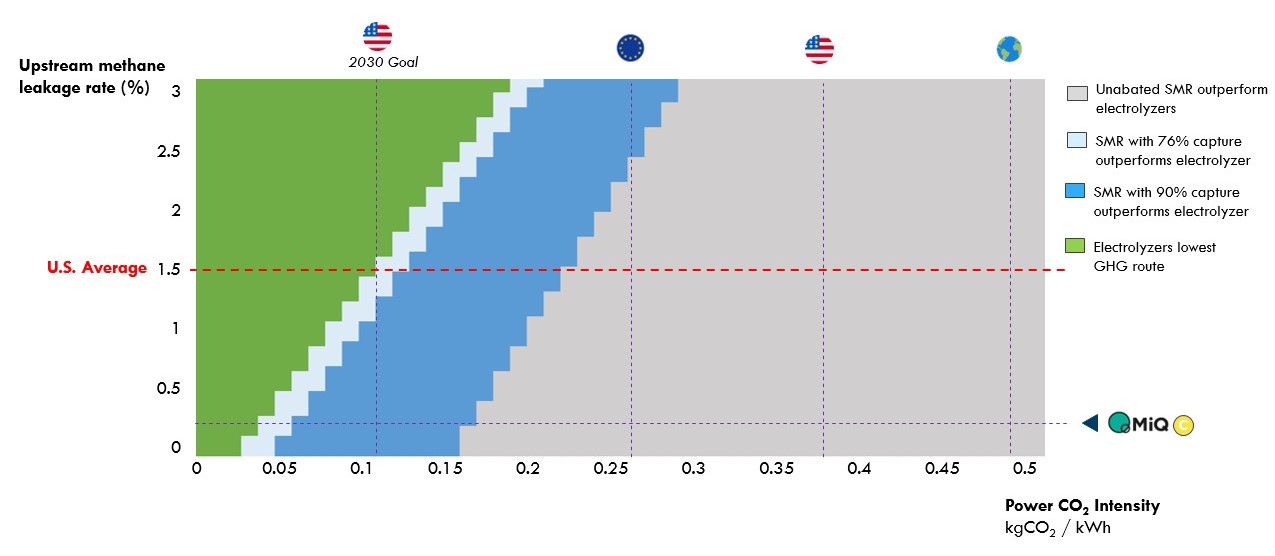
Five Hydrogen Myths – Busted
Here we tackle some of the biggest myths and misconceptions around hydrogen, adapted from our extensive “Reality Check” series.
Hydrogen produced from renewable electricity is a breakthrough climate solution. It can be produced to emit nothing but oxygen, and when used it doesn’t produce carbon dioxide, making it an attractive alternative to the polluting fossil fuels in use today. But like any new technology, myths about its function and applications abound. Here we tackle some of the biggest myths and misconceptions around hydrogen, adapted from our extensive “Reality Check” series.
Myth: Because hydrogen can do it all, it should.
In theory, hydrogen can be used to decarbonize almost every sector. But just because it can, doesn’t mean it should. As one of several tools in the decarbonization toolbox, hydrogen should be prioritized after energy efficiency when direct electrification is not possible. In particular, hydrogen’s potential to decarbonize heavy industry and transport cost-effectively makes it a necessary part of the clean energy transition.
One of the factors constraining global decarbonization is the scarcity and value of renewable electricity, which is used to produce “green” hydrogen. Already the world needs vastly more clean electricity infrastructure, as power consumption in 2050 is expected to double from population and economic growth alone — and only 10 percent of electricity today comes from solar and wind. Add in the electricity required to make green hydrogen to decarbonize heavy industry and transport, and power consumption could triple.
Given this backdrop, at a macro level, it is important to prioritize reducing electricity consumption and using renewable electricity most efficiently. As such, many of today’s micro-level business cases of hydrogen for heating buildings, generating power, or fueling light-duty vehicles are better suited for investments in energy efficiency or direct electrification (see Exhibit 1 below).
Exhibit 1: Electricity required (kWh) to reduce the emissions of light duty transport, building heat, and power generation by 1 kg CO2e using either green hydrogen or direct electrification.
Hydrogen is key to reaching our climate goals, but deploying hydrogen in instances where energy efficiency and direct electrification are better options will hinder our ability to quickly and cost-effectively decarbonize our energy system. To maximize the system-wide efficient use of valuable clean electricity, hydrogen should be used when these solutions are not possible.
Heavy industry applications like fertilizer or steel manufacturing along with long-distance heavy-duty transport are no-regrets applications of hydrogen today, which may in time be joined by aviation and long-duration energy storage. Put simply, we need hydrogen — but not for everything.
Myth: All “clean hydrogen” is equally clean.
The term “clean hydrogen” has no universally accepted definition, but broadly speaking, “clean” hydrogen refers to any hydrogen produced with lower emissions than the incumbent fossil fuel-based methods. While there are many clean hydrogen production pathways often categorized by “colors,” two most common types — green and blue — exemplify the main considerations:
- Green hydrogen: Hydrogen produced by splitting water molecules through electrolysis using renewable energy sources
- Blue hydrogen: Hydrogen produced from a natural gas feedstock with capture of the by-product carbon dioxide.
Both green and blue hydrogen are getting attention today for their carbon reduction benefits, but these pathways are not equal in their certainty of producing low-emissions hydrogen. Furthermore, a simple color coding is insufficient to clarify the emissions of each production path. Depending on differences in the supply chain and technology performance, two supplies of hydrogen with the same “color” can have widely different carbon footprints, as seen in Exhibit 2. Understanding these differences requires visibility into the carbon intensity of the supply chain.
Exhibit 2: The carbon intensity of hydrogen varies widely, depending on the production method, methane leakage rates, and carbon capture rates for steam methane reforming (SMR) in the case of “blue” hydrogen derived from natural gas. Note: Calculations assume a 100-year methane lifetime.
In reality, every form of hydrogen production has different emissions risks. Producing hydrogen from renewable electricity is the most straightforward way to ensure emissions are near zero, but all methods of production will require additional regulations to meet the mark. Supply chains must be strictly managed with a cradle-to-gate view on emissions to maximize hydrogen’s climate benefits.
Myth: Hydrogen is a significant warming risk.
Emerging studies present scenarios of leaked hydrogen contributing significantly to climate warming. It is true that hydrogen leaked into the atmosphere at any point in the supply chain can act as an indirect greenhouse gas, reacting with pollutants like methane to extend their lifetime in the atmosphere. Leaked hydrogen can also impact ozone concentrations, potentially harming air quality and the recovery of the ozone layer, and it can create water vapor in the atmosphere, enhancing the greenhouse gas effect.
However, even at high rates of leakage, green hydrogen has an undeniably positive climate benefit in the short- and long-term, especially compared to the demonstrably large climate harm from the fossil fuels it replaces across the supply chain (Exhibit 3).
Exhibit 3: Hydrogen’s emissions impacts along the supply chain are less than those of natural gas, given the large and highly variable upstream methane emissions of natural gas. Crucially, as a carbon-free fuel, hydrogen eliminates all CO2e emissions seen from combustion of fossil fuels.
Even in an improbable non-regulated alternative reality with high leakage rates, hydrogen is still beneficial in our race to decarbonize. Blue hydrogen will provide advantages over its unabated fossil fuel alternatives, but its climate alignment remains more uncertain than that of green hydrogen, given the significant emissions risks from methane leakage, onsite capture efficiency, and permeance of storage.
Developing robust leak prevention technologies through improved connectors, compressors, and storage vessels will enable new systems to be nearly leak-proof, and reliable and cost-effective leak detectors will be important to deploy at scale. Producers are already proactive about minimizing and detecting leakage from a safety perspective, but these measurement techniques are more rudimentary and designed to limit ignition risk. More sensitive detectors to monitor small leakage volumes are available, however. Incentives to support wide-scale measurement and reduction of leakage will bolster investment in such technologies as the global race to scale hydrogen intensifies.
Myth: Green Hydrogen is still decades away.
The reality is that green hydrogen is ready to play a major role in global emissions reductions by 2030.
Year after year, organizations have continually increased their projections of how much global electrolysis capacity will be on line to produce hydrogen from electricity in 2030. Projections made this year are orders of magnitude greater than those from prior years (Exhibit 4).
Exhibit 4: Historic estimations of electrolysis capacity in 2030. Sources: Hydrogen Council, DNV Hydrogen Forecast to 2050; DNV Energy Transition Outlook 2020 and 2021; ETC, Making the Hydrogen Economy Possible
By mid-2022, over 34 countries had developed national strategies around hydrogen. The EU’s domestic green hydrogen production targets for 2030 quadrupled to 10 million metric tons, equivalent to roughly 100 GW of electrolyzer capacity, via the REPowerEU transition strategy. Given green hydrogen’s key role in decarbonizing industry and heavy transport, enabling domestic energy security, and stabilizing consumer prices, the world has acknowledged that we need green hydrogen at scale — and we need it faster than we ever thought.
Green hydrogen is well positioned to play a substantial role in emissions reductions by 2030. Gigawatt-scale projects are happening now, and demand is growing. Manufacturing of electrolyzers is rising and will only accelerate as more project plans reach final investment decision. Scaling this new technology does not mean starting from scratch, as existing infrastructure can be leveraged to get hydrogen where it needs to go, and early actors are simplifying the path forward through investments in hydrogen hubs or green shipping corridors. Green hydrogen is here — and it is here to stay.
Myth: Green hydrogen consumes too much water.
Producing the amount of hydrogen that the energy transition needs will require a lot of water, but in the context of how much water we already use, the amount will be insubstantial. The US National Clean Hydrogen Roadmap targets 50 million metric tons of clean hydrogen annually produced by 2050. Producing all this hydrogen via electrolysis at 20 L/kg would require 1 billion cubic meters of water, or 0.26 percent of US current water usage (Exhibit 5). This analysis doesn’t consider potential water savings from hydrogen replacing water-intensive industrial processes.

Exhibit 5: US Green hydrogen production in 2050 is projected to consume far less water than other large scale consumers already do today, including agriculture and thermoelectric power production. Sources: energypost.eu; "Global scenarios for significant water use reduction in thermal power plants based on cooling water demand estimation using satellite imagery"; USGS; PRB.
Although on a global scale green hydrogen’s water needs are small, it is critical to ensure green hydrogen does not strain local freshwater resources. Hydrogen developers should prioritize efficient process design and consider local water availability in project siting. In areas of water scarcity, consideration of alternative sources such as treated wastewater or desalinated sea water will minimize freshwater reliance.
The choice of green hydrogen will consume no more water than its fossil-based “blue” hydrogen alternatives, and sometimes even less. Green hydrogen requires a cumulative 20–30 L/kg of water, and blue hydrogen requires 32–39 L/kg of water. Put in context with other large-scale water consuming processes used today, to produce the same amount of energy green hydrogen production consumes less than half the water of typical coal or nuclear electricity production.
With careful siting, planning, and operational considerations for local water management, green hydrogen projects can minimize total freshwater reliance and have a net positive impact on the surrounding region.
